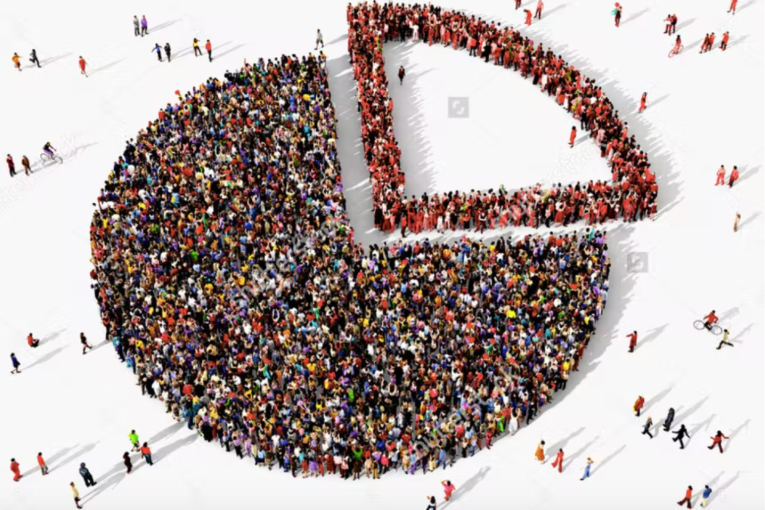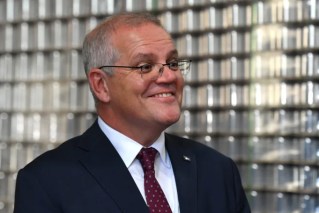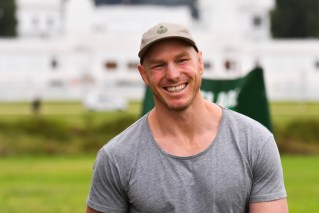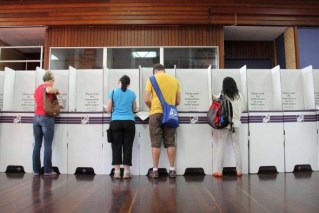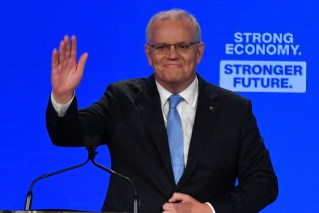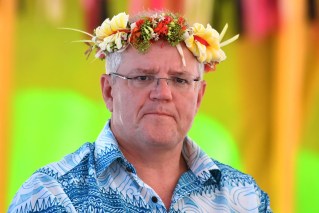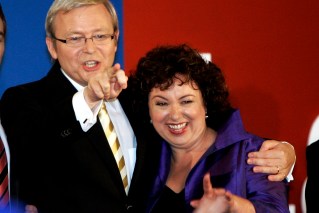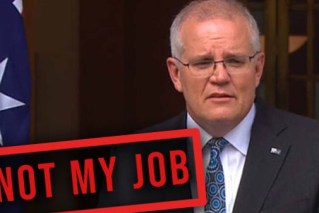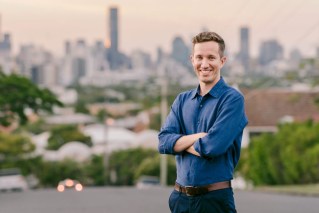Heading for home straight, beware of long shot Greens whipping up chances
Kermit the Frog says it’s not easy being green when you can’t stand out like “flashy sparkles in the water or stars in the sky”. Dennis Atkins tests how Kermit’s maxim might hold in the looming federal election.


Greens member for Griffith Max Chandler-Mather is seeking to expand the party's target audience. (Photo: greens.org.au)
It’s “what if time” in the federal election. If this was the W.S. Cox Plate – Australia’s greatest weight for age test of strength and stamina for horses – we would be in the back straight at about the thousand metre point.
Those watching the race would be asking, who will be best placed when the horses get to the famous “school”, the 600 metre mark just before the home turn.
Those who have a good position there and know when to make a run will most likely be at or near the front in the last couple of furlongs.
More often than not one horse breaks away and wins with ease. Horses like Winx, Dulcify and Sunshine tell that story.
One of the local Queensland what if questions is whether the Greens party can break through in the House of Representatives and score a seat from Labor or the Liberal wing of the LNP. Can they take off from the school and storm home in the straight.
The absence of any disaffected “moderate Liberal teal” candidates in inner-metropolitan Brisbane seats has pundits and analysts turning to the Greens as the party to possibly fill this void.
Three seats are in play – Brisbane, Ryan and Griffith – and all have solid Greens voter bases upon which to build for insurgents from the environmentally based party.
The Greens are talking a big game, as they do in the lead up to most Queensland electoral contests.
At the most recent Brisbane City Council elections, the Greens boasted they would win three, four, or even five wards. They finished with their solo representative, Jonathan Sri in the Gabba Ward around West End, Dutton Park, Highgate Hill, Woolloongabba, Kangaroo Point and East Brisbane, getting re-elected. No net gain.
At the state poll in 2020 again we heard the Greens suggesting they would not just take South Brisbane to add to Maiwar (which they won in 2017) but also pick up Cooper and McConnel. South Brisbane was almost impossible not to win so they did no more than might have been expected.
Now they are in the big talk business again.
The basis for this big talk is the collapse in the LNP vote in inner-city seats and the relative proximity of the Greens and Labor in 2019.
The first premise is solid, however the second needs a bucket of salt.
Yes, the Greens did well in 2019 and Labor’s primary vote in these three seats was low.
Brisbane is the seat where these circumstances are most in play. LNP incumbent Trevor Evans scooped up 47.8 percent of the primary vote while Labor was a distant second with just 24.5 percent. Breathing down the Labor Party’s neck was the Greens party, just over two points away at 22.4 percent.
On paper the Greens look to be in the box seat and they might be. However, the 2019 Labor vote can be reasonably assumed to be a floor and, with a fairly significant drop in the LNP vote, the ALP should get back into the 30s.
This sets the task of the Greens as being the need to increase the minor party’s vote by at least seven or so points – that is a one third boost. It’s a big ask by any measure and the fall in Liberal support is more likely to go to the Labor Party.
It’s not surprising that both the ALP and LNP report the biggest shift in votes from the incumbent to the main challenger is happening in the north eastern end of the seat, around Clayfield and Ascot.
All this suggests the likely winner in Brisbane will be Labor.
Ryan is also interesting because again Labor only managed half of the LNP vote in 2019 (24 percent against 48 percent) and the Greens were a bit further away at 20 percent.
The changing demographics in Ryan could count against the incumbent, Liberal Julian Simonds, with a sizeable increase in the number of young voters. This is one reason for the strong Greens presence in the state seat of Maiwar.
Again, Labor’s higher primary vote might make the job too difficult for the Greens to get into second place – the LNP floor in Ryan is almost certainly higher than in neighbouring Brisbane.
You would give Simmonds a better chance of winning with the benefit of both incumbency and a sophomore cushion for a first term MP. The history of Ryan also favours an LNP hold.
In Griffith, Labor is under some pressure from Greens tactical hotshot Max Chandler-Mather who ran the state election campaign two years ago. There’s no doubt he has thrown plenty of energy into the campaign for Griffith – saturation door knocking and an intense yard sign game – but the Labor primary could be a hurdle that’s difficult to clear.
The ALP’s Terri Butler will either finish closer to her opponent (in 2019 the difference was about 30 percent for Labor against 40 percent for the LNP) and could conceivably get in front.
Either way, the Greens will need to lift its vote mightily from the 23.6 seen three years ago.
The two things that look like roadblocks for the Greens in these Brisbane contests are an increase in the Labor primary vote and a concurrent slump in support for the LNP.
There could be a time when the Greens are genuinely competitive in all three of these seats with Griffith most probably in more trouble than the others. May 21 might be a contest too soon.
Track conditions could see the Greens slipping and sliding the home stretch.
